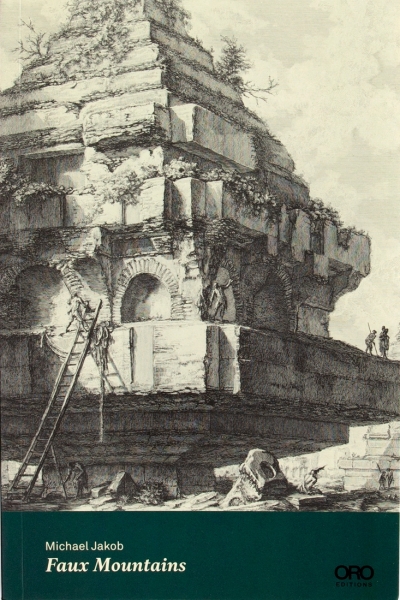Fulya İLBEY
CONSTRUCTIVE MANIPULATIONS™ FOR STRATEGIC RESILIENCE
gerade nicht auf Lager
Alan Smart, Jack Henrie Fisher (ed.)
Counter-Signals 5. Systems and their Discontents
gerade nicht auf Lager
Silke Kapp, Mariana Moura (ed.)
Sérgio Ferro. Architecture from Below. An Anthology
Daniel Loick
Die Überlegenheit der Unterlegenen. Eine Theorie der…
Víctor Aguado, Ramón del Buey, Brandon…
Party Studies Vol. 2. Underground Clubs, Parallel…
Nina Dragičević
Auditory Poverty and its Discontents – An Essay
Iracema Dulley, Özgün Eylül İşcen (eds)
Displacing Theory through the Global South
Karoline Mayer, Katharina Ritter,…
Über Tourismus
gerade nicht auf Lager
Bernd Stiegler
Bildpolitiken der Identität. Von Porträtfotografie bis zu…
Chris Kraus
Ehrgeiz, Demut, Glück. Texte zu Kunst und Freundschaft
gerade nicht auf Lager
Laboratory EAST
Studies on Assemblies: Mass Made Units.
gerade nicht auf Lager
Tom Holert
„ca. 1972” Gewalt – Umwelt – Identität – Methode
Nadejda Bartels (Hg.)
Alvar Aalto in Deutschland: Gezeichnete Moderne / Alvar…
Tchoban Foundation
Sauerbruch Hutton. Drawing in Space
Derek McCormack
Judy Blame's Obituary. Writings on Fashion and Death
gerade nicht auf Lager
Corinne Cath
Eaten by the Internet
gerade nicht auf Lager
Nike
After All, there is No Finish Line
ECCHR
Beyond Limitations. Wolfgang Kaleck, Tomas Saraceno
ECCHR
Challenging Corporate Power. Gearoid O Cuinn, Miriam Saage-…
Jeanne Gang
The Art of Architectural Grafting. Usefulness and Desire in…
Jochen Eisenbrand
Transform! Designing the Future of Energy
gerade nicht auf Lager
Adam Gibbons, Eva Wilson
Abbas Zahedi in conversation with Eva Wilson "" #7
Kevin Yuen Kit Lo
Design Against Design. Cause and consequence of a…
Timon Beyes
Organizing Color. Toward a Chromatics of the Social
gerade nicht auf Lager
Eric Drott
Streaming Music, Streaming Capital
Francois Laruelle
Phenomenon & Difference. Essay on the Ontology of…
gerade nicht auf Lager
Mohammad Salemy (ed.)
Model Is the Message. Incredible Machines Conference 2022
gerade nicht auf Lager
Joshua Comaroff, Ong Ker-Shing
Horror in Architecture. The Reanimated Edition
Armen Avanessian, Daniel Falb
Planeten Denken. Hyper-Antizipation und Biografische…
Arch+ Zeitschrift für Architektur und…
Arch+ 254. Klaus Heinrich - Dahlemer Vorlesungen: Giovanni…
Florian Reischauer
Pieces of Berlin 2019-2023
gerade nicht auf Lager
Tim Carpenter
To Photograph is to Learn How to Die
Oxana Timofeeva
Solarpolitik. Ein philosophischer Essay über die Sonne,…
Hans-Christian Dany
Schuld war mein Hobby. Bilanz einer Familie
Andreas Weber
Indigenialität
gerade nicht auf Lager
Achim Szepanski, Force Inc. / Mille…
In the Delirium of the Simulation: Baudrillard Revisited by…
gerade nicht auf Lager
Never Sleep (Ed.)
Archivio #1 - Records Store Ads & Paper Ephemera From…
Diedrich Diederichsen
Das 21. Jahrhundert. Essays
gerade nicht auf Lager
Redaktion Protocol
Protocol 14. Nonkonforme Architekturpraxis
gerade nicht auf Lager
Markus Miessen (Ed.)
Agonistic Assemblies. On the Spatial Politics of…
Hella Gerlach
Gelenkstellen - Loose Joints
gerade nicht auf Lager
Grant H. Kester
Beyond the Sovereign Self. Aesthetic Autonomy from the…
Jana Müller
Jana Müller. Falscher Hase / Mock Rabbit
gerade nicht auf Lager
Editors for this issue: Ariane Müller,…
Starship 20
Moises Puente (Hg.)
2G 90. Johansen Skovstedt
gerade nicht auf Lager
Achille Mbembe
Brutalism
Leigh Claire La Berge
Marx for Cats. A Radical Bestiary
Léa Perraudin, Clemens Winkler, Claudia…
Material Trajectories. Designing With Care?
gerade nicht auf Lager
Chus Martínez
The Complex Answer. On Art as a Nonbinary Intelligence
gerade nicht auf Lager
Kader Attia, Anselm Franke, Ana…
The White West: Fascism, Unreason, and the Paradox of…
Marion von Osten (Aut), Lucie Kolb,…
Material Marion von Osten 1: MoneyNations
gerade nicht auf Lager
Aleksandra Kędziorek, Katarzyna…
CIAM ARCHIPELAGO. The Letters by Helena Syrkus
Georgina Voss
Systems Ultra. How Things, People, and Ideas Connect in a…
Piet Eckert, Wim Eckert (Hg.)
Ontologie der Konstruktion. Raumwirkung in der Architektur
Gabrielle Schaad, Torsten Lange (eds.)
archithese reader: Critical Positions in Search of…
gerade nicht auf Lager
Kersten Geers, Jelena Pancevac (eds.)
Giancarlo de Carlo. Experiments in Thickness
Lauren Berlant
Grausamer Optimismus
Joanna Zylinska
The Perception Machine
gerade nicht auf Lager
Alessandro Ludovico
Tactical Publishing
Aaron Betsky
The Monster Leviathan. Anarchitecture
gerade nicht auf Lager
Jason McBride
Eat Your Mind. The Radical Life and Work of Kathy Acker
gerade nicht auf Lager
Nóra Ó Murchú, Janez Fakin Janša (Eds.)
A Short Incomplete History of Technologies That Scale
gerade nicht auf Lager
Ingo Niermann
The Monadic Age. Notes on the Coming Social Order
gerade nicht auf Lager
Dennis Pohl
Building Carbon Europe
Julieta Aranda, Kaye Cain-Nielsen,…
Wonderflux - A Decade of e-flux Journal
Regine Ehleiter, Clio Nicastro, titre…
HaFI 020: Erika Runge: Überlegungen beim Abschied von der…
gerade nicht auf Lager
Natascha Sadr Haghighian, Tom Holert
HaFI 019: Natascha Sadr Haghighian: Was ich noch nicht…
gerade nicht auf Lager
Sónia Vaz Borges, Madeleine Bernstorff…
HaFI 018: Skip Norman: On Africa
Clémentine Deliss
Skin in the Game
Peter G. Rowe, Yoeun Chung
Design Thinking and Storytelling in Architecture
gerade nicht auf Lager
Richard Weller
To the Ends of the Earth. A Grand Tour for the 21st Century
François J. Bonnet, Bartolomé Sanson (…
Spectres IV. A Thousand Voices / Mille Voix
gerade nicht auf Lager
Edited by Jolanthe Kugler and Scott…
Keep it Flat. A little history on flat earth
gerade nicht auf Lager
Edited by Jolanthe Kugler and Scott…
Objective: Earth - Designing our Planet
Daniel Martin Feige, Sandra Meireis (Hg…
Ästhetik und Architektur
gerade nicht auf Lager
Luis Manuel Garcia-Mispireta
Together, Somehow. Music, Affect, and Intimacy on the…
Arnold Aronson
Fifty Key Theatre Designers
Quentin Stevens, Kim Dovey
Temporary and Tactical Urbanism: (Re)assembling Urban Space
gerade nicht auf Lager
Flavien Menu (Ed.)
Proto-Habitat
Matteo Pasquinelli
The Eye of the Master. A Social History of Artificial…
Angelika Burtscher, Daniele Lupo
AS IF - 16 Dialogues about Sheep, Black Holes, and Movement…
Anna Unterstab
Design intersektional unter die Lupe nehmen. Gestaltung als…
Silvio Lorusso
What Design Can't Do. Essays on Design and Disillusion
Lena Enne
Everyday Urban Design 8. Anmeldung not possible. Das…
Ruth Duma-Coman
Everyday Urban Design 7. Der translokale Gebrauch des…
gerade nicht auf Lager
Andrew Berardini
Colors
Heinz Hirdina, Achim Trebeß, Stiftung…
Theorie und Geschichte des Designs 2. Reaktionen auf die…
Heinz Hirdina, Achim Trebeß, Stiftung…
Theorie und Geschichte des Designs 1 Einführung / Italien…
gerade nicht auf Lager
Lukas Feireiss, Florian Hadler (Hg)
Weak Signals. New Narratives in Art and Technology
dérive
dérive N° 94, Wohnungslosigkeit beenden (Jan-Mär 2024)
raumlaborberlin
Polylemma. raumlaborberlin
IDEA Magazine
IDEA 404. Co-creation between AI and US
Johanna Mehl, Carolin Höfler (Eds)
Attending [to] Futures. Matters of Politics in Design…
Talja Blokland
Gemeinschaft als urbane Praxis
gerade nicht auf Lager
Deirdre Loughridge
Sounding Human. Music and Machines, 1740/2020
Claudia Hummel, Valeria Fahrenkrog,…
Berliner Hefte zu Geschichte und Gegenwart der Stadt #10.…
Lukas Brecheler, Lionel Esche
Wohnhochhaus
Gianpaolo Tucci
Aesthetics Imperfections. How AI is Changing the Landscape…





























































































![Attending [to] Futures Cover](/sites/default/files/styles/400/public/media/coverbilder/9667928300001A.jpg?itok=rApLfGZY)




